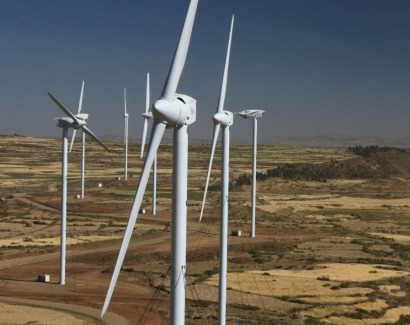
DNV GL confirmed the compliance of the installed wind turbines with DNV GL’s A-Design Assessment. The wind farm shall help to reduce the occurrence of blackouts in Ethiopia. The country has some of the best wind resources in the world and has a fully developed plan to get up to about 7 GW of wind energy by 2030.
“Certification and design validation are essential for technically reliable wind turbines”, said Mersudin Bajric, Project Manager for Renewables Certification at DNV GL.
The A-Design Assessment comprises a thorough evaluation of the turbines, ensuring that they meet the requirements of DNV GL standards which addresses safety, quality and engineering integrity of the turbine, and verifies that wind turbines comply with standards in terms of its load assumptions and design.
“Ethiopia has basic infrastructures with a national electrical grid that is still in build-up phase. Ashegoda is situated in complex terrain at 2,200 to 2,500 m above sea level. This combination led to quite some organisational and technical challenges, which DNV GL helped to handle," said Ludovic Dehondt, Project Manager at Vergnet.
The wind turbine inspections in Ethiopia took approximately two weeks and were accompanied by thorough investigation and assessment work. Vergnet’s 1 MW wind turbine is a two bladed turbine with a patented lowering system making it possible to lower down the upwind part of the nacelle without an external crane. The turbine addresses the specific needs of complex sites, especially for cyclonic areas.
For additional information:

